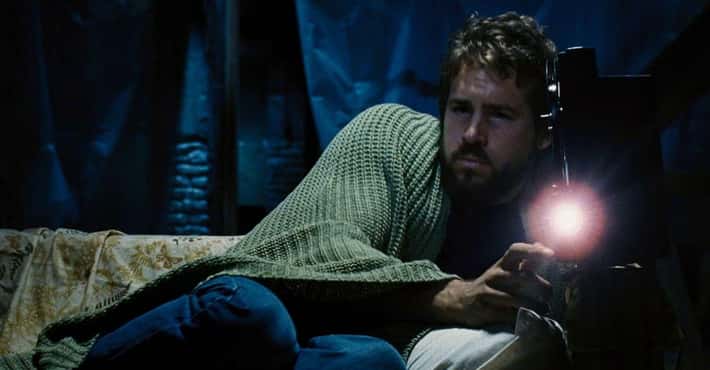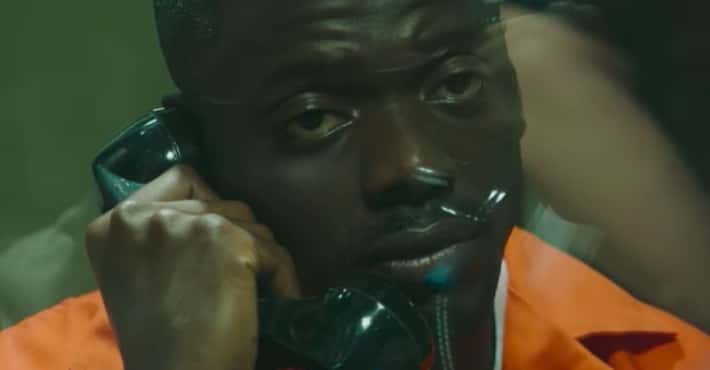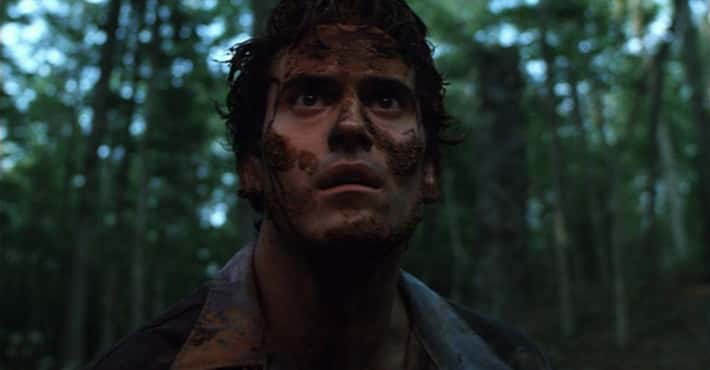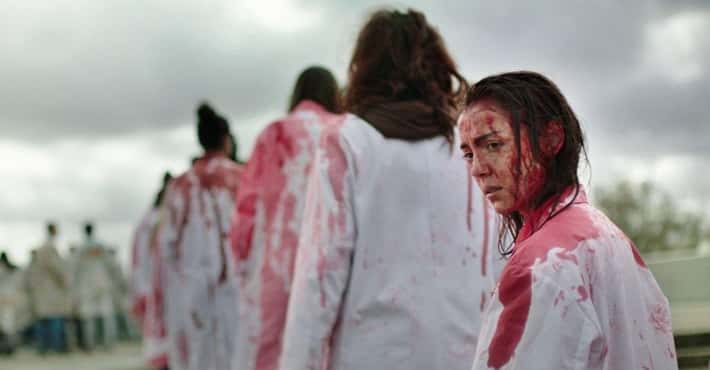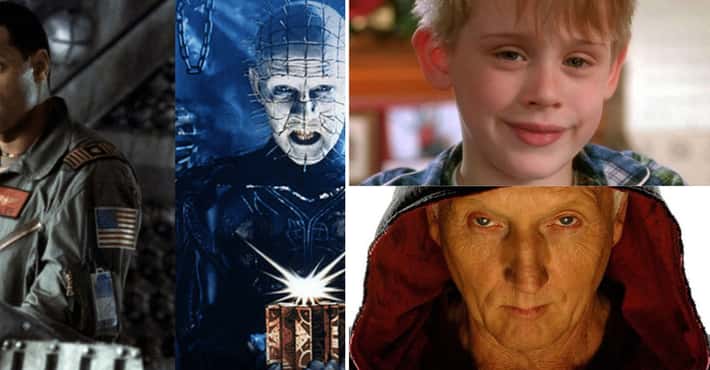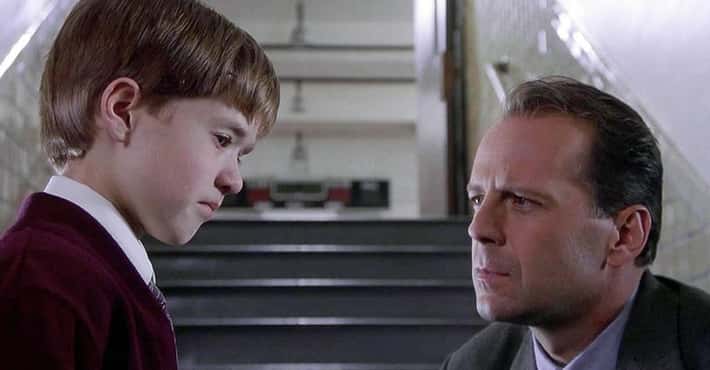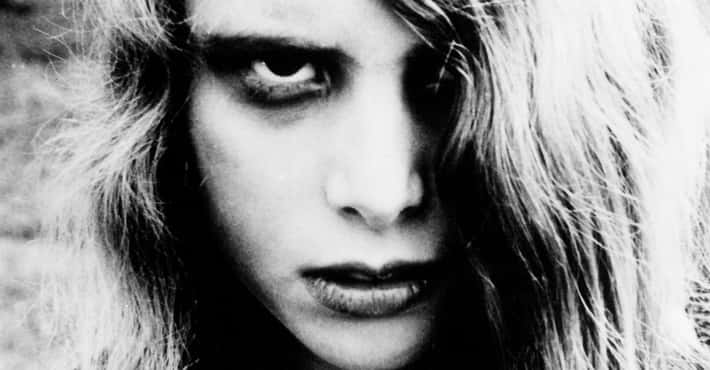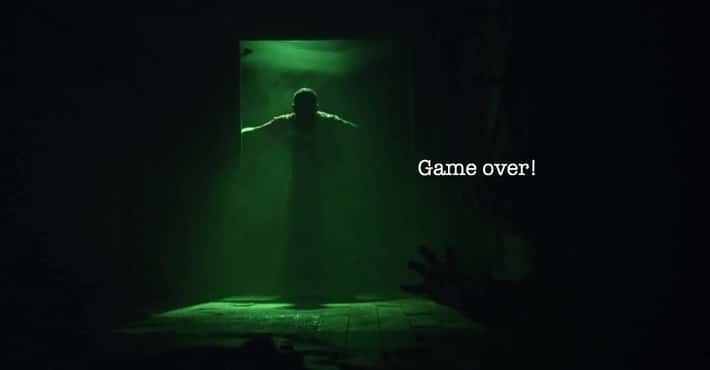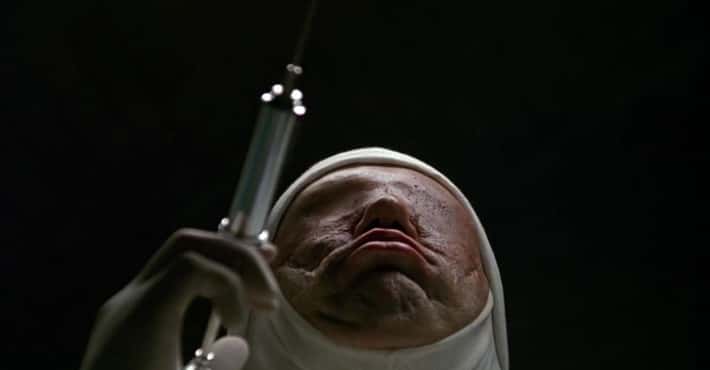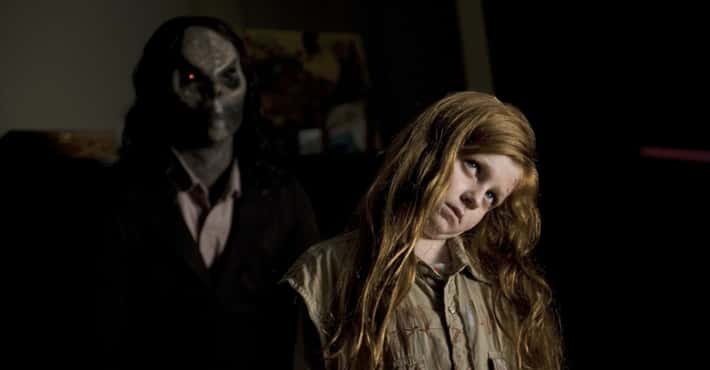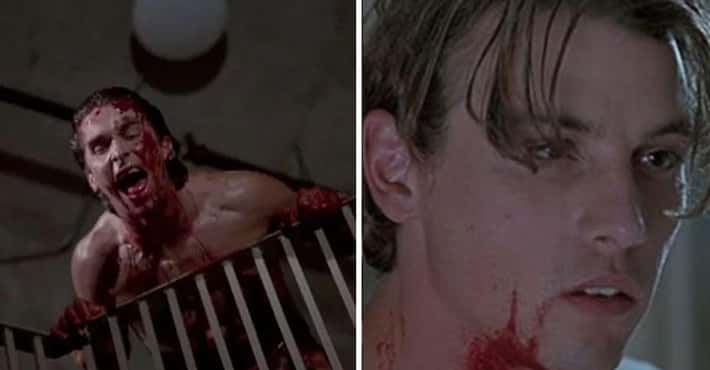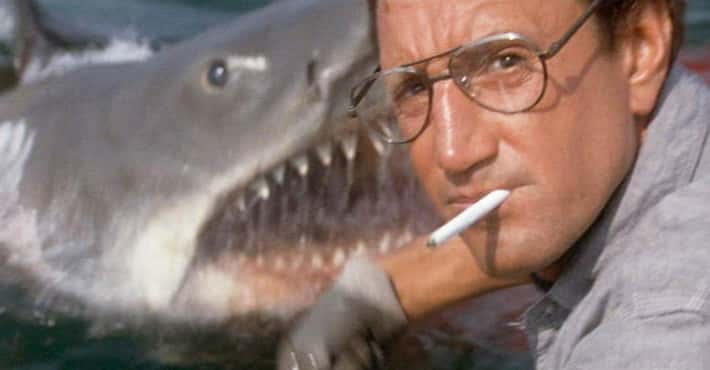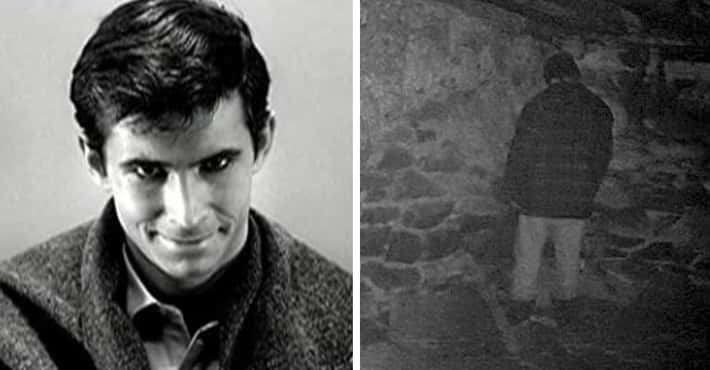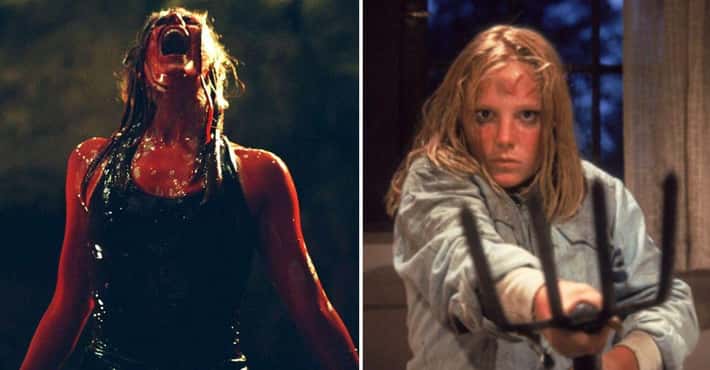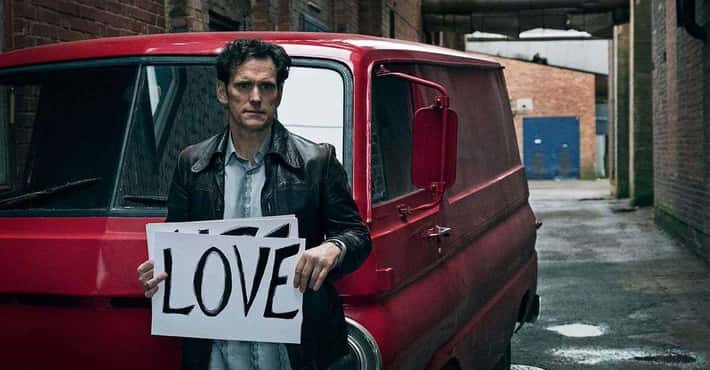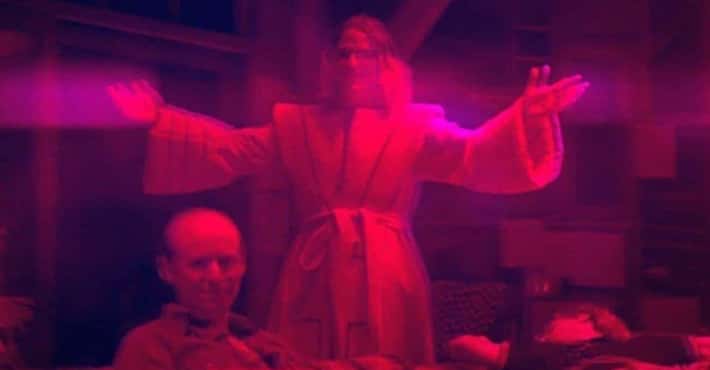
- Photo:
- Candyman
- TriStar Pictures
The Dark History Of Daniel Robitaille, AKA Candyman
Copy link
Circa 1865, Daniel Robitaille Is Born The Son Of A Slave
Far before the events of any of the films, and before the Candyman legend even existed, there was man of flesh and blood who was born in the 1800s. The first film does not name him, but it does explain that at the end of the Civil War, his father, formerly enslaved, was newly wealthy from his invention of a shoe-making machine. With this money, he was able to send his son to the best schools in the country and give him the chance to grow up in polite society, among the socialites of the day.
Surprisingly, not until the second film, Farewell to the Flesh, did he get a name: Daniel Robitaille. The sequel fills in other details, as well: He was born at Esplanade Plantation in New Orleans shortly after the end of the Civil War, meaning he was born either during or very shortly after 1865.
In 1890, Robitaille Is Commissioned To Paint The Daughter Of A Prominent Landowner
Through his extensive education and travels, Daniel Robitaille not only became a charismatic and well-educated young man, but also discovered that he possessed a great talent for art, gaining him renown amongst the upper class. They would seek him out and commission him to paint their portraits, which they'd hang in their homes as status symbols. This was how he met Caroline Sullivan, the daughter of a wealthy landowner in the Cabrini-Green area of Chicago. This man's name is never mentioned in any of the films, but the credits of Farewell to the Flesh identify him as Heyward Sullivan.
The man had hired Robitaille to capture Caroline's "virginal beauty" in his art, but little did he realize that during those long hours of portrait-sitting, the two would bond and fall deeply in love. Eventually, Caroline became pregnant with Robitaille's child.
Shortly After, He Is Lynched For Forming A Relationship With A White Woman
Once Heyward realized his white daughter had formed a relationship with a Black man, his hatred and racism boiled over. He hired a group of men to finish the painter, and some neighbors joined the crowd to witness his doom. After a chase, Robitaille's attackers cornered him, sawed off his hand with a rusty blade, slathered him in honey from the local apiary, and watched as angry bees stung him relentlessly. One boy watching took a taste of the leftover honey and called Robitaille "Candyman" for the first time. The crowd followed, chanting the name repeatedly to mock him.
Just before Robitaille succumbed to the bees' venom, Heyward joined in the taunting, holding a mirror up to Robitaille's mutilated face as the crowd held back Caroline, who was screaming through her tears. In this moment of agony, Robitaille's spirit was transferred into the mirror, leaving his cold body behind.
Caroline then broke free and made off with the mirror, never to be seen by the people of Cabrini-Green again. Robitaille, meanwhile, was burned on a pyre and his ashes were spread across the area, and over time, his story faded into legend.
Caroline Lives On Through The Early 1900s, Carrying Daniel Robitaille's Legacy In Secret
While many of her neighbors believed she had taken her own life or simply vanished out of shame, in reality, Caroline ran away to the South. She ended up at Esplanade Plantation in New Orleans, the birthplace of her lost lover. Here, she hid the last piece of him, the soul contained in the mirror.
She also stayed and gave birth to their daughter Isabel, whom she raised as white. With her fair skin, the little girl easily passed, and the family line continued with no outsiders knowing their true lineage - in fact, the family itself eventually lost this knowledge. Within a few generations, Annie Tarrant, the protagonist of Farewell to the Flesh was born and raised in this same house, with no clue that Isabel was her grandmother or that Candyman her great-grandfather. When she later moved out, the house fell to ruin and vandals.
In 1992, Helen Lyle Comes To The Cabrini-Green Housing Project To Investigate The Candyman Legend
As the story of Daniel Robitaille became the story of Candyman, his bloody stump gained a hook, the bees became an omen of his ghost's arrival, and chanting his name into a mirror - like the taunts of the crowd - became his summoning spell. The third film, Day of the Dead, even specified that the crowd chanted his name five times before he succumbed to his stings. Over the years, his place of passing, Cabrini-Green, became a ghetto, and residents blamed their misfortunes on his vengeful ghost.
Then, in 1992, after a particularly harsh year of 26 killings in the area, his legend started to leak out to the rest of the world. Newspapers reported the killing of one Ruthie Jean in great detail, noting how she called 911 to report a stranger coming through her bathroom mirror. Her case caught the attention of Helen Lyle, a graduate student writing her thesis on urban legends. This is the start of the first film.
With a new focus on Candyman specifically, Lyle's actions during her research actually discredited his existence. Her thesis claimed that his myth was nothing more than a coping device for the stresses of living in the ghetto, and when she was bombarded by a gang member while looking around the housing project, police apprehended him and assumed he was responsible for the Candyman killings, "disproving" the myth. But, just as Lyle began to feel safe in her conviction that none of this was real, her hubris ended up summoning the real Candyman.
Lyle Appears To Defeat Candyman, But She Sacrifices Herself To Save Anthony McCoy
Candyman explains that he appeared to Lyle because she discredited his legend, and now innocent blood must be shed to rebuild it. This manifests in his framing her for multiple killings over the course of the movie before she tries to take her own life in the film's final showdown back at the housing project.
Having kidnapped young Cabrini-Green resident Anthony McCoy (the infant son of Ruthie Jean's neighbor, Anne-Marie), Candyman trapped the child and Helen in a pyre. He intended to take both of them out in a fiery blaze that would once again instill fear of him into the community's heart. However, she managed to fight him off, and as he seemingly succumbed to the heat, she was able to carry Anthony out of the pyre. She used her body to shield him from the flames, sacrificing her life to save his. Unfortunately, in the wake of her passing, she received the blame for the Candyman killings and seemingly became a vengeful, murderous spirit herself, gaining her own place in the local mythos.
In 1995, Three Years After The Chicago Killings, Candyman Is Resurrected In New Orleans
Although Helen seemingly defeated Candyman in 1992, just three years later, more gruesome killings in the Candyman style - in which the targets are sliced up with a hook - began popping up, this time in New Orleans.
This marks the entrance of schoolteacher Annie Tarrant, the previously mentioned great-granddaughter of Daniel Robitaille who grew up in his house of birth without knowing her roots. She refused to believe an urban legend was responsible for so much misery, and even said Candyman's name the requisite five times into a mirror in front of her class to prove her disbelief and assuage their fears. Unfortunately for her, the summons worked, and on the eve of Mardi Gras, the man with the hook returned.
Annie Destroys The Mirror That Holds Candyman's Soul
Candyman's reappearance in New Orleans marked the franchise's first sequel, Farewell to the Flesh. Over the course of this film, Candyman proved he had no qualms about targeting his own family, as he took the lives of both of Annie's parents (his grandchildren) and Annie's husband (who had recently conceived his great-great-granddaughter with Annie), and he caused the demise of her brother (his great-grandson). Essentially, Annie became his last remaining descendant, and he made it clear he intended to dispatch her, as well, to achieve his ultimate goal: to reunite the entire bloodline in the afterlife.
Annie eventually uncovered not only the truth about her past, but also that the mirror Caroline hid away all those years ago remained in the basement of Esplanade Plantation. Candyman himself even confirmed that the mirror was the source of his strength. Once he made his plans clear, Annie broke it, seemingly destroying him.
Once the mirror broke, the house that birthed the Candyman legend was essentially washed away in a climactic flooding scene.
Circa 2000, Annie Gives Birth To Caroline McKeever And Resurrects Candyman’s Spirit
The final scene of Farewell to the Flesh flashes forward an unspecified amount of time to reveal that Annie later gave birth to a baby girl. She looks to be around 5 years of age, so the year is likely around 2000. Annie named her Caroline (likely after her great-great-grandmother) and even showed her pictures of her old family in a scrapbook, including images of Isabel, Caroline (senior), and Daniel himself.
Perhaps she did this to spare her child the troubles she herself endured as a result of not knowing her heritage. The third film in the franchise, Day of the Dead, actually reveals that Annie intended for Caroline to destroy the myth with the knowledge of reality, but this plan backfired almost immediately.
At the end of this film, young Caroline tries to summon Daniel in the mirrors of her toys before Annie stops her, and sometime between this film and the next, Annie develops dementia and accidentally ressurects Candyman by calling his name and giving her life to him, starting the cycle for yet another generation.
Circa 2020, Candyman Follows A Now-Adult Caroline To LA
Twenty-five years after the events of Farewell to the Flesh, Annie's daughter Caroline McKeever moved to LA and inherited a collection of original Daniel Robitaille paintings. She respected the pieces' history and wished to attribute them to the man rather than a monster, but sadly, the gallery in which she exhibited them couldn't resist marketing the exhibition using the Candyman name, especially with Dia de Muertos just around the corner.
Frustrated by their greed, Caroline summoned Candyman in the mirror in front of a room full of patrons to disprove the myth - a decision that (unsurprisingly) ends poorly.
Caroline Faces Off Against Candyman And Manages To Escape With Her Life
After yet another slashing spree, this time on the eve of the titular Day of the Dead, Candyman made clear that his goal was still to see his bloodline reunited in the afterlife, Caroline included. But after quite a bit of screaming and running in circles (this film is hardly the most beloved in the franchise), she managed to outmaneuver her ancestor's vengeful spirit.
She took a hook to his self-portrait, realizing the slashes she made on the painting also appeared on his body, and used this connection to take him down. She also pinned the killings he had commited (and framed her for) on a detective who was hunting her down for her perceived offenses in order to further detract from his legacy.
Once again he was seemingly defeated - but for how long?
In 2021, Anthony McCoy Returns To Cabrini-Green
After the unenthusiastic reception of the franchise's straight-to-video third installment, Candyman may very well have been dead after all. But surprisingly, in 2021, Nia DaCosta's Candyman was finally ready to hit theaters. From the look of the trailers, the story follows an artist by a familiar name: Anthony McCoy.
Yes, the same Anthony McCoy Lyle saved from Candyman's clutches all those years ago has now grown up, and he's as successful an artist as Daniel Robitaille ever was. More importantly, the trailers also reveal that he's traveling back to where it all started: Chicago's own Cabrini-Green.
He's not the only returning character, either - Kelly Rowan, the actress who played his mother, Annie, is also coming back to the franchise, nearly three decades after the original film premiered.














